Raising Monarch Butterflies: What You Need to Know
Updated: Jul. 28, 2022
Find out how to raise monarch butterflies and and see what supplies you need. Plus, readers share tips and stories about raising monarchs.
Why Should You Raise Monarch Butterfies?
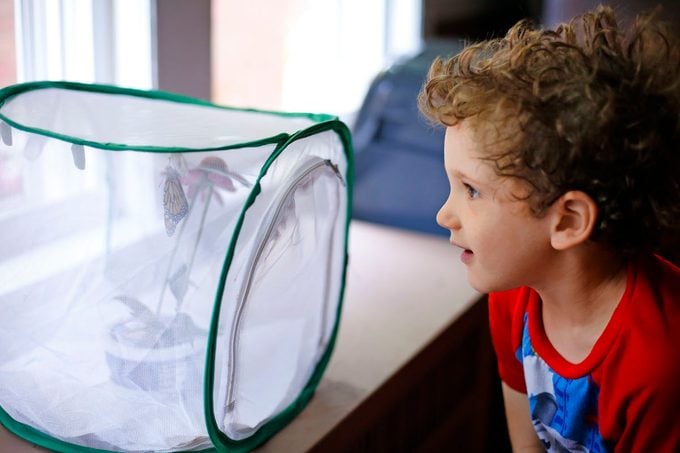
There’s so much to take in when it comes to monarch butterflies, including their incredible migration journey. When you raise monarch butterflies, you get the magical experience of seeing these amazing creatures up close through the different stages of their life cycle. These orange-and-black insects are a joy to observe as they hatch from eggs, grow into caterpillars and transform into adult butterflies. It’s educational for all ages, and you can feel good that you’re doing your part to help these pretty pollinators.
Psst–check out these fascinating monarch butterfly facts.
How to Raise Monarch Caterpillars and Butterflies
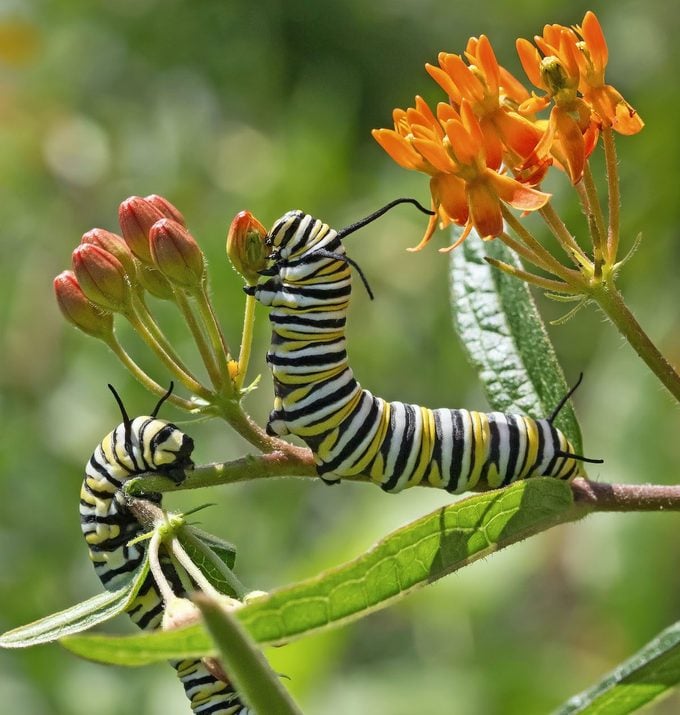
First, there are a few key things you should know about raising monarchs.
- In order to successfully raise adult monarch butterflies, you need caterpillars. We recommend this monarch rearing kit from Monarch Watch, which includes 14 to 16 live monarch larvae and detailed instructions.
- You must have live milkweed plants for your caterpillars ready when they arrive. According to Monarch Watch, each caterpillar generally needs 18 inches of milkweed to pupate. Pupation will occur in about 10 days and adults will emerge 10-14 days after pupation. Follow these instructions for successful monarch caterpillar rearing. You can order free milkweed seed packs from Save Our Monarchs.
- Plant a pollinator garden. Patches of summer and fall blooming nectar flowers help fuel adult monarch butterflies for their long migration journey. Here are the top flowers to grow for monarchs.
- Skip pesticides. The common sprays for wasps and other bugs harm butterflies, too. Try to use natural pest control methods without chemicals.
- Join a citizen science project. The monarch butterfly is instantly recognizable, and many people know the migratory population is struggling. Breeding monarchs are the subject of the Monarch Larva Monitoring Project. Participants report regularly on eggs, larvae (caterpillars) and the milkweed they need to survive. Other ways to get involved include Journey North, Project Monarch Health and Monarch Watch.
Are monarch butterflies endangered?
Reader Stories About Raising Monarch Butterflies
Birds & Blooms readers share their experiences and tips on how raise monarch butterflies and watch the next generation take flight.
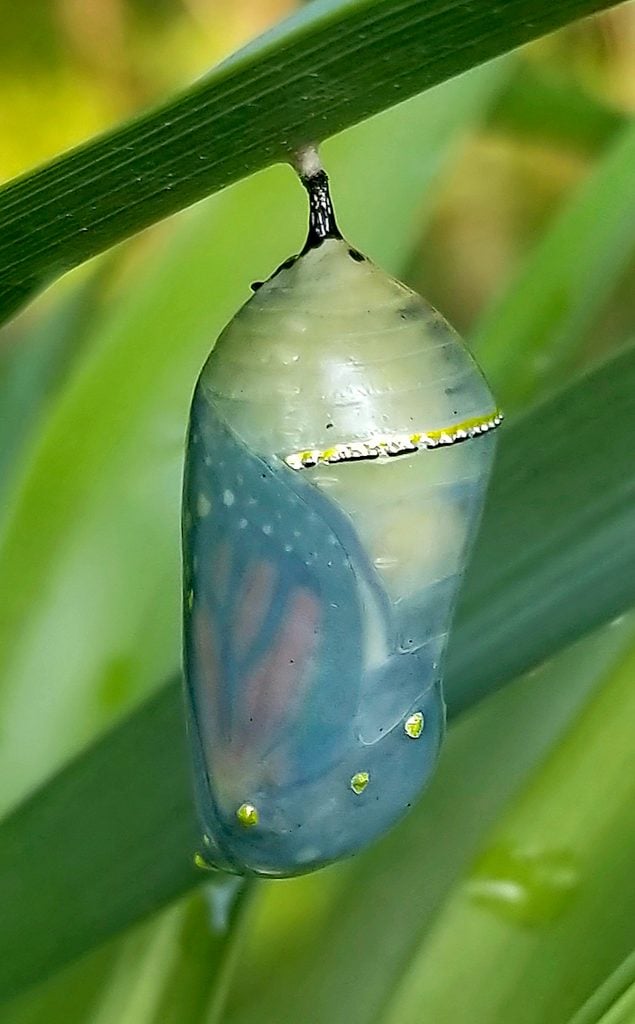
“I have a large pot filled with milkweed that attracts monarchs,” says Trudy Peterson of Davenport, Florida. “The caterpillars go crazy feeding on the plant, but I had never seen a chrysalis until last summer when I found one on a nearby ponytail palm. I moved the palm into our lanai where it would get protection from the elements. When the chrysalis began to darken, I carried the palm out to the garden. I took this photo (above) just a few hours before the butterfly emerged. At last, success! A female monarch butterfly flew away to start the cycle all over again.”
Do monarch butterfly sightings have meaning?
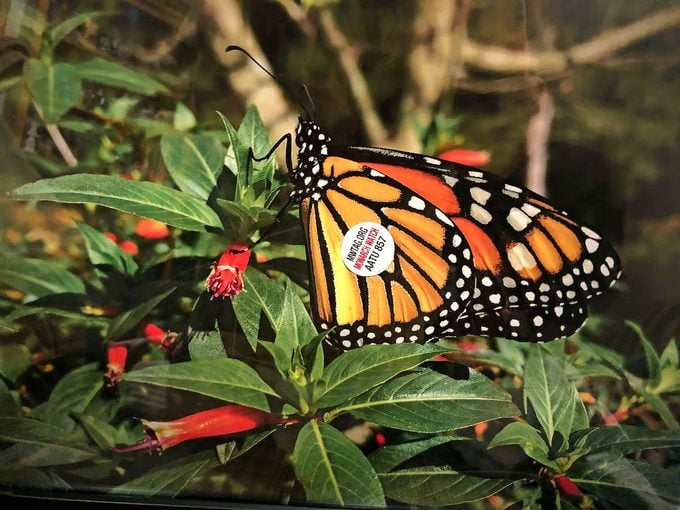
“I snapped this photo of a monarch (above) a few summers ago after I placed a tag on its wings,” says Jessica Bisko of Morrisdale, Pennsylvania. “It was one of the first years that I participated in the monarch tagging program. This one stopped to pose nicely before its long journey to Mexico.”
Can you tell the difference between a viceroy butterfly vs a monarch.
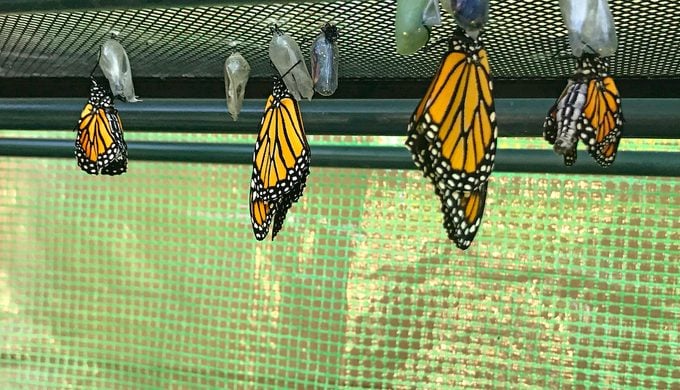
“This photo is from the first year that I raised monarch butterflies from caterpillars or, as my granddaughter calls them, ‘callipitters,’ says Susan Blake of Thiensville, Wisconsin. “These butterflies were the first to emerge from their chrysalises. It was more than magical!”
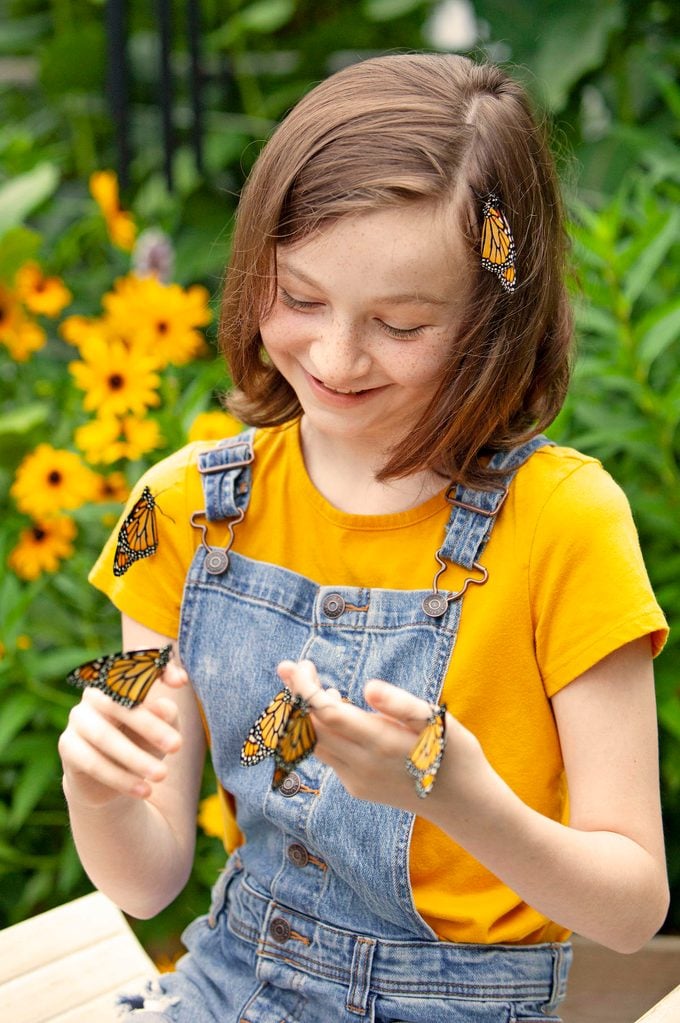
Brianne Colling of Canton, Michigan says monarch butterflies brought some joy during a difficult time: “My daughter was diagnosed with Type 1 diabetes and admitted to the hospital for three days. It came as a shock but, thankfully, with treatment, she bounced back quickly. We did a mini photo shoot (above) as we said goodbye to a group of the monarchs we raised. Every year we raise as many as we can to help their dwindling population.”
Discover 3 butterflies that look like monarchs.
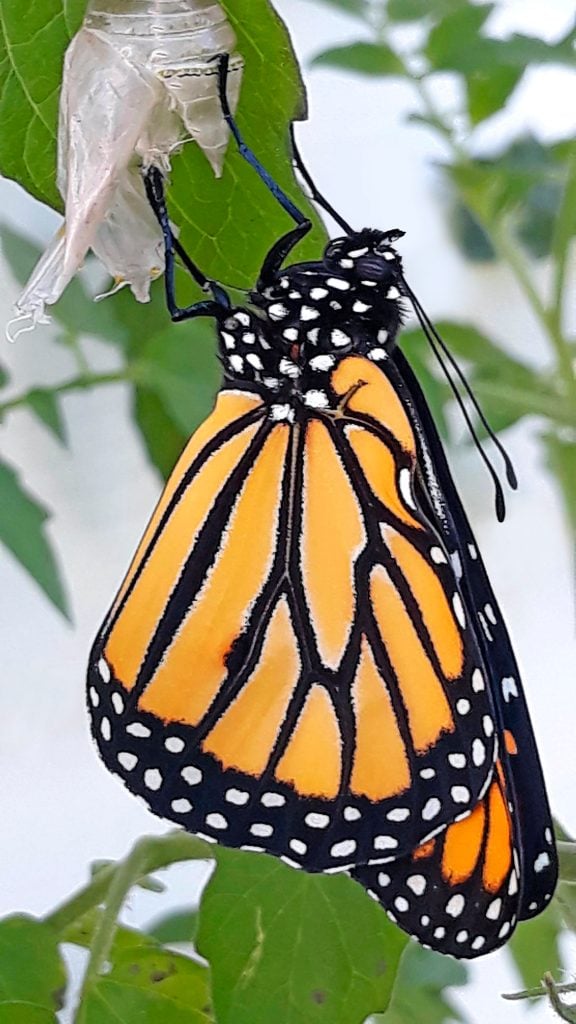
“This little one was so new it hadn’t let go of its chrysalis yet,” says Arnold Leuenberger of Jonesborough, Tennessee. “We do everything we can to encourage butterflies to visit, such as planting milkweed, zinnia and other favorites. In 2020, we were blessed with 36 monarch caterpillars and 32 found chrysalises. We watch migration charts and hope for another good year.”
Next, learn how to support the painted lady butterfly life cycle.




















